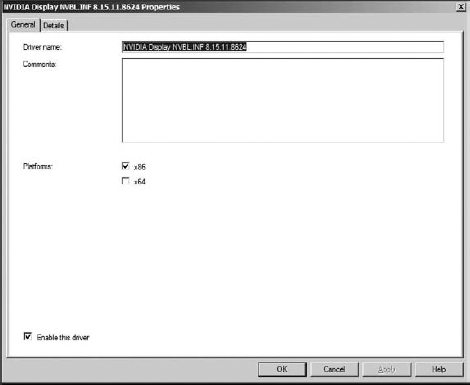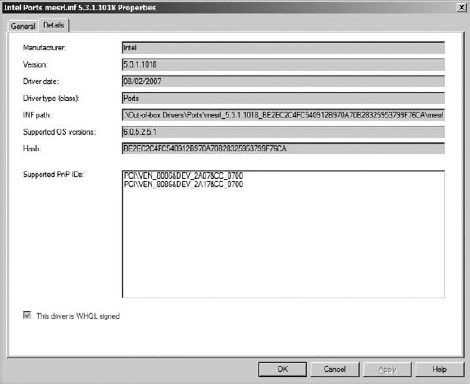You learned that you can just
right-click the Out-of-Box Drivers node (or a folder you created within
that node) and choose Import Drivers. You supply the folder and path to
the drivers you want imported and that's it. Looking at the properties
of a driver after they have been imported into the Deployment Workbench
reveals two tabs: General and Details.
The General tab shows the driver name, comments, and
platforms supported (x86 or x64). At the bottom of the page is the
Enable This Driver option. By default, after you add a driver it is
enabled, but if you choose to disable a driver, you must remove the
check mark from the Enable This Driver box. On the General tab (see Figure 1), you can input comments to help you remember why you are installing the driver or anything else you would like to comment on.

The Details tab, shown in Figure 2,
displays the manufacturer, version, driver date (of creation), driver
type (class), INF path (path to the information file supplied by the
vendor), supported OS versions (if they are listed in the INF file for
the driver), a hash to determine whether a driver has been tampered
with, and the list of supported PNP IDs. The driver shown in Figure 2
has only two supported PNP IDs, but drivers can have more. Beginning at
the top of the list of PNP IDs will be the most specific ID for that
device; then they become more generic as you get to the bottom of the
list. For example, the PNP ID of PCI\
VEN_8086&DEV_2A07F&CC_0700 will tell you this is an Intel
driver (VEN_8086 is Intel).
The option at the bottom of the Details tab, This
Driver Is WHQL Signed, is very important because it indicates whether
the driver has a Windows Hardware Quality Lab signature.
